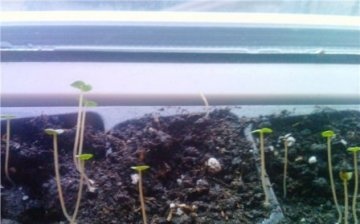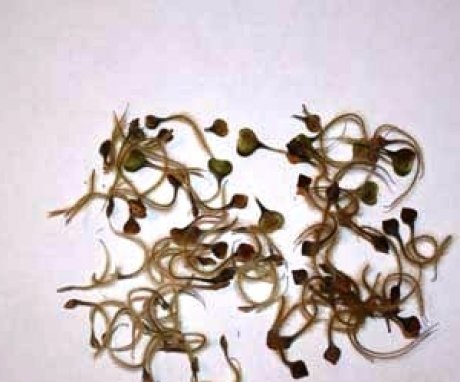How to grow clematis from seeds
Modern gardeners have a special interest in clematis. This marvelous plant as an elegant decorative element can decorate any corner in the garden: cover the alley-path with a soft colorful carpet, decorate the facade of the house with curly delicate garlands, hanging along the wall. And how unusual the terrace will look, framed on all sides by abundantly flowering vines! There are many types of clematis and they are all so different that you want to grow each copy yourself.
Content:
How to grow clematis?
In nature, there are mainly small-colored clematis, which have only slightly undergone breeding. Instances of large-flowered species are exclusively the fruit of the work of breeders. Most of the clematis species are climbing vines dotted with flowers.
They can freely twist to a height of several meters, clinging to the supports. They are used with pleasure for decorative landscaping. There are also bush species growing up to 1 meter high. They are grown mainly in flower beds in group plantings or alleys.
In what way can you grow clematis on a personal plot? Many people believe that it is easier to propagate a flowering liana by layering rather than by seeds. But in fact, growing clematis from seeds is not at all difficult, you just need to know the characteristics of the plant and observe some conditions when caring for it.
Most importantly, novice gardeners need to keep in mind that clematis seeds retain their freshness and ability to grow for only one year. Therefore, the seeds collected after flowering are best planted before winter or next year with the onset of spring.
If you purchased seeds from a store and the packaging shows a 4-year expiration date that is already expiring, it is better to refuse to purchase. Most likely, such seeds have already lost their germination and are not suitable for planting.
Clematis seed treatment
Before planting any crop, seed material must be subjected to any processing. Some methods help to bring seeds out of dormancy and increase their germination, while others help to harden and strengthen against diseases. Gardeners use different methods seed preparation clematis.
1. Stratification by cold. This method allows you to quickly remove seeds from their natural dormant state and start the growth process. For this, clematis seeds are placed in a container with coarse sand, moistened and taken out into a cold room. The mixture is stirred occasionally and water is added as it dries. In this state, they are kept for 2.5-3 months at a temperature of +5 degrees, after which the container is placed in a cold cellar or buried in snow. In spring, clematis seeds are planted in the ground. Treated in this way, they will sprout together in 16-20 days after sowing.
2. Bubbling. This treatment method is based on keeping the seeds in oxygenated water. You can use an aquarium compressor for this purpose. Seeds of clematis are placed in a vessel, filled with water and the compressor tip is lowered there. Air is blown in for 25 minutes. After that, the seeds are spread on a cloth and dried. This method of processing significantly increases the germination of clematis seeds. Seedlings appear much faster - already at 10-12 days.
You can grow clematis seeds before planting in the ground on peat tablets, which are pre-moistened with water to swell. The seeds are sown on the surface of the swollen tablets and are well moistened. Place the container with crops in a place with good lighting and ensure proper watering.
Landing rules
Sandy ones are better for clematis. soil and light loams with a slightly acidic or alkaline reaction. The soil should be moderately fertilized, loose and breathable. Heavy and acidic soils are not at all suitable for growing climbing vines.
Clematis does not tolerate nearby groundwater. This is due to the fact that the roots of the plant, reaching more than 1 meter in length, quickly rot when there is an excess of moisture and the vine dies.
It is better to plant clematis on a hill or on bulk soil.
As soon as clematis grow up, special supports are installed for them, which will support young plants during strong winds. The supports are installed, making a gap at a distance of at least 30 cm from the wall.
As clematis grows, it is necessary to moisturize well, especially in the early years. Sufficient watering will give strength to the plant for the formation of lush foliage and multicolor. On hot days, the soil around the plant is loosened and mulched to retain moisture. A loose layer of peat, humus or sawdust is used as mulch.
In the early years, clematis mainly builds up the root system, very few shoots are formed. It is better to pick off the emerging single flowers. With proper care, an adult plant at the age of 4-5 years will develop many young shoots on which large flowers will be located.













